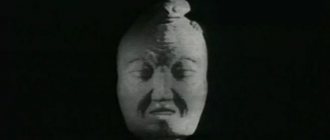- Hemophobia in children and adults
- Why does a phobia occur?
- Causes
- Main symptoms
- Treatment of hemophobia
- Correct installation
- Drug treatment
- Exercises to calm down
- Meditation to treat hemophobia
You can often hear from a child: I’m afraid to donate blood from my finger. Such irrational fear of a medical procedure is accompanied by hysteria. Hemophobia, the fear of donating blood, affects adults who did not cope with the phobia in childhood.
Hemophobia - fear of donating blood
A progressive mental disorder harms a person: against the background of one phobia, other fears develop, and new symptoms appear. Treatment of fear involves correcting the thinking and behavior of the victim of the phobia.
Hemophobia in children and adults
Hemophobia is the fear of the procedure of drawing blood from a finger or from a vein. The body's spontaneous defense reaction is accompanied by an acute reaction from the patient. The internal state of fear is born due to the inevitability of pain: from the first procedure, a negative experience is stored in the child’s memory. He knows that donating blood hurts.
Hemophobia arises against a background of false expectations. Before the procedure, the little patient is told that he will not experience any pain. Deception enhances the negative experience and in adulthood the person continues to be afraid of the procedure and avoid it. Hemophobia is accompanied by other fears: fear of medical institutions or fear of infections.
Why does a phobia occur?
For the development of fear, prerequisites are needed. People with good stress resistance are less likely to suffer from obsessive disorders. Environmental factors worsen personality resilience. Excessive stress on the psyche creates internal tension: problems at work or at home reduce defense mechanisms. As a result, physical and mental stress only intensifies the phobia, and the person experiences weakness, apathy, and becomes depressed.
Negative factors include the pace of life of a modern person. Without timely rest, mental disorders are inevitable.
Pessimism, which is another defensive reaction of the psyche, creates the preconditions for the development of fear. The more a person believes in the negative outcome of any event, the more susceptible he is to phobias.
How to donate blood from a vein
The technique of collecting venous fluid from children and adults determines the correctness of the results of the entire analysis. If venipuncture is taken incorrectly, the doctor will make an incorrect diagnosis and select the wrong course of therapy. Following simple rules guarantees results.
If blood sampling from a vein in children and adults is done correctly, complications associated with incorrect technique are almost completely eliminated. Most often, such disorders are hematomas in the surrounding tissues, which arise due to the fact that the vessel is punctured through and through. And if proper sterility is not maintained, the vein will become inflamed and sepsis will develop.
To take blood from a child or an adult, the doctor takes a vacuum system, a needle or a disposable syringe. The doctor uses a needle to force the liquid directly into the tube. This method is becoming less and less common because, firstly, it is inconvenient, and secondly, there is a high risk that the biomaterial will come into contact with the doctor’s hands or with surrounding objects.
In clinics, blood is often drawn into a disposable syringe. This also has its downsides. First: additional tools are required - a test system, a test tube. Second: during the collection process, hemolysis must be constantly carried out.
Nowadays, the latest vacuum systems designed to take venipuncture are gaining popularity. This system includes:
- Vacuum test tubes, chemical reagent;
- thin needle;
- adapter (holder).
All components of the vacuum system are strong. They have color coded caps for different assays. Any contact of the biomaterial with anything else, except perhaps the inner walls of the test tubes, is completely excluded. No additional tools required. Donating blood to vacuum systems is safe and not painful. The likelihood of distortion of analysis results by the environment is minimized.
Collection method:
- Preparing containers.
- Preparation of directions.
- Labeling of the test tube.
- Patient record.
- Fix your hand correctly.
- Place an oilcloth pillow under your elbow.
- Tie a tourniquet above the puncture site.
- Check for wrist pulsation.
- Tell the person to clench and unclench your fist.
- Lubricate the injection site with an alcohol swab.
- Insert the needle at an acute angle.
- Lower the syringe handle until the required volume is filled.
- Press the alcohol-soaked cotton ball and remove the needle.
- Keep your arm bent for 5 minutes.
Venipuncture in newborns cannot be performed due to the characteristics of the body. The veins near the fontanel are used. The labeled tubes are taken to the laboratory. 24 hours is enough to conduct a general analysis. In urgent situations, a special note is given to laboratory assistants, then the examination is completed in a couple of hours.
“Healthy Family” - collecting and checking tests quickly thanks to direct cooperation with the institute. High accuracy is guaranteed by foreign equipment and experienced laboratory technicians. By contacting here, the patient will find everything he needs for examination, counseling, prescribing the most effective treatment, and recovery.
Causes
The causes of hemophobia are always psychological in nature. If a person is afraid of pain, the reason for the fear is an exaggeration of the pain syndrome that the patient once experienced. It is common for a victim of a phobia to make a tragedy out of the procedure and exaggerate the discomfort during blood donation. Reasons why the patient is afraid of the procedure:
- fear of blood;
- negative experience;
- incorrect attitudes and associations;
- associated phobias.
A person is afraid to see his own or someone else’s blood - these are different phobias. Fear of the sight of your blood is a defensive reaction. Fear of the sight of someone else's blood is expressed in disgust towards people or fear of becoming infected. You need to understand the causes of fear by studying possible and additional causes of irrational fear.
The phobia is intensified by obsessive states: if the patient is afraid of needles, unsterile objects, or the smells of medical institutions, the future procedure causes panic fear. Over time, the phobia develops, and the patient avoids the test procedure to the detriment of his own health.
The reasons for the phobia may lie in the negative experience of donating blood.
Why do they take blood from a vein?
By examining venous blood, you can obtain all the necessary information about the health of the person from whom it was taken. Next, it remains to clarify the diagnosis using instrumental research. In this case, doctors usually use those clinical methods that are useful for obtaining information about the disease, correcting the course of treatment, and are also useful for preventive and screening examinations.
By conducting a general blood test, doctors find out the ESR and cellular composition of the blood. This examination is prescribed for diagnosing inflammation, infections and blood diseases. It is mandatory for annual examinations.
By studying blood biochemistry, you can detect the main biological indicators (proteins, lipids, electrolytes, glucose, enzymes) and liver and heart diseases, as well as notice oncology. By studying hormonal levels, you can find out the level of hormones, the quality of metabolism, as well as how well the digestive and endocrine glands work.
By checking the immunological status, you can detect the development of allergies and find out the state of cellular and humoral immunity. Each pathology requires blood donation from a vein to make a correct diagnosis.
It is safe and painless, and will allow you to diagnose the disease on time. Neglecting such a measure forces you to pay a high price, as it leads to an incorrect diagnosis with all the ensuing consequences.
offers all types of medical services. The cost of taking blood from a vein is low, as is the case with other examinations. Experienced doctors will help decipher the data received, talk about problems, and help identify hidden diseases.
Conditions for which you need to donate blood:
- Inflammatory processes of different origins and localizations.
- Anemia.
- Poor clotting.
- Blood loss.
- Malignant neoplasms.
Main symptoms
A child and an adult perceive threat differently. The baby's first defensive reaction is hysteria. In adult patients, the phobia manifests itself differently: he deliberately ignores the procedure. A person stocks up with a whole arsenal of excuses why he won’t be able to undergo the procedure. Manifestations of hemophobia:
- uncontrollable panic attacks;
- loss of consciousness;
- confusion of thoughts;
- shortness of breath (a person is suffocating and cannot take a deep breath);
- cardiopalmus;
- tremor of the upper and lower extremities.
Manifestations of hemophobia cannot be controlled; spontaneous reactions occur when there is a need to take blood. The fear of blood makes you nervous.
A panic attack is accompanied by increased anxiety. This condition may last for several hours after the procedure.
Hemophobia causes increased sweating, chills and chest pain. During an attack, a person poses a danger to himself and others.
A progressive phobia affects the perception of reality: dizziness and headaches, temporary clouding of reason. An obsessive condition needs urgent treatment.
How not to be afraid to give up - useful tips
To be bold:
- Before going to the procedure, drink plenty of water. It will be easier for the nurse to “extract” blood from a vein or finger. Things will go much faster;
- we explain to the nurse about the problem so that she can carry out the procedure quickly and carefully;
- When we sit on the chair during the fence, we relax as much as possible. We think about something soothing and pleasant. We mentally repeat a mantra, for example this: “Relaxed, good, relaxed, good.” We take deep breaths and exhale slowly.
It is unwise to develop complexes because of a phobia. Fear will go away faster if you honestly admit to the medical staff: “I’m afraid to donate blood from a vein (or finger).”
Treatment of hemophobia
Fear is a normal protective reaction of the body. The psyche senses a threat and immediately reacts to it. The fear of blood is not fatal, but it does affect human behavior. If the problem is a fear of blood, it is necessary to develop resistance to the sight of it. Habituation occurs along with establishing new affirmations.
Phobia with an acute reaction is less common. In most cases, the manifestation of fear is an anxious state. Psychotherapeutic techniques are used to help the patient: the level of fear is reduced, the true cause of the phobia is determined.
Emergency assistance to the patient if the fear of blood suddenly manifests itself:
- the patient sits in a comfortable position, the head tilts towards the knees (in this position, blood rushes to the head and the pressure decreases);
- breathing is restored (even breathing helps to calm down and reduce anxiety);
- After the exercise, you need to stand up and relieve tension from the muscles.
Such help is needed in cases where a panic attack interferes with diagnosis.
The primary task is to establish control over your own body. If a person cannot control the body's reactions, the phobia will only intensify over time.
Correct installation
Attitudes are internal beliefs that are formed in early childhood. After the first visit to the doctor, the baby forms an impression of the procedures completed. Negative experiences are the main cause of hemophobia in the future.
Impressionable people suffer from hemophobia. They are accustomed to react sharply to any environmental changes. It is difficult for hypochondriacs who are afraid of infection to cope with medical procedures.
Working with a psychoanalyst will help you get rid of the feeling of fear: a person works on his own thinking, gets rid of attitudes embedded in the subconscious.
Drug treatment
Hemophobia is not a dangerous irrational fear. In most cases, treatment is accomplished without drug therapy. A course of sedative tablets is prescribed for increased anxiety. Sedatives provide temporary relief and are not a cure. Tranquilizers are not prescribed in case of hemophobia.
Exercises to calm down
The best option for getting rid of hemophobia is physical exercise, which helps relieve excess stress. Adaptive responses are shaped by self-control skills. Breathing exercises will help you calm down in a short time. In a comfortable position (sitting or standing), it is necessary to restore breathing. Don't hold your breath. As soon as your breathing calms down, hold your breath for 2-3 seconds for every 5th breath. Then breathing is restored again. The exercise is repeated at least 3 times.
Meditation to treat hemophobia
Meditation is an effective calming technique. It does not fight the cause of the phobia, but helps to counter the spontaneous reactions of the body. Meditation calms anxiety, relieves stress and muscle tension.
Yoga classes are suitable for preventing the development of additional phobias. In combination with psychoanalysis, the relaxation technique allows you to get rid of the obsessive state.
Meditation is an effective calming technique
If you are afraid to donate blood from a vein, can you donate from your finger?
But this is not necessary! Venous blood tests are more accurate. Finger blood is a mixture of capillary blood and interstitial fluid, and all reference values that doctors rely on when interpreting blood values are calculated for pure venous blood.
In addition, not everyone’s blood flows easily from their finger. And then the nurse can rush and start squeezing the finger, trying to extract the right amount of blood. This leads to damage to the red blood cells and, as a result, an incorrect number of red blood cells in the test.
Strong pressure on the finger can also distort the level of leukocytes. The fact is that normally, leukocytes in the capillary are located near the vascular wall. If the vessel narrows when pressed, white blood cells enter the main bloodstream. As a result, we get a false increase in their number.
Conclusion. You should donate blood from your finger only as a last resort - if it is impossible to take blood from a vein. This happens in people with very low blood pressure, those undergoing chemotherapy, or if the veins are seriously damaged.











